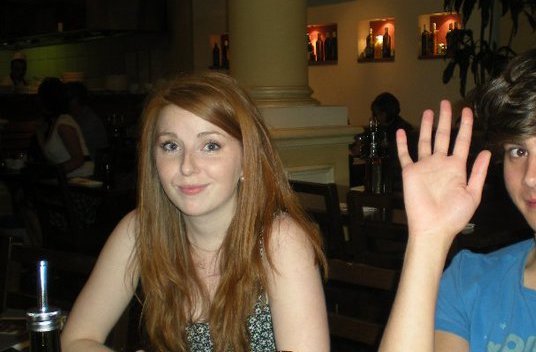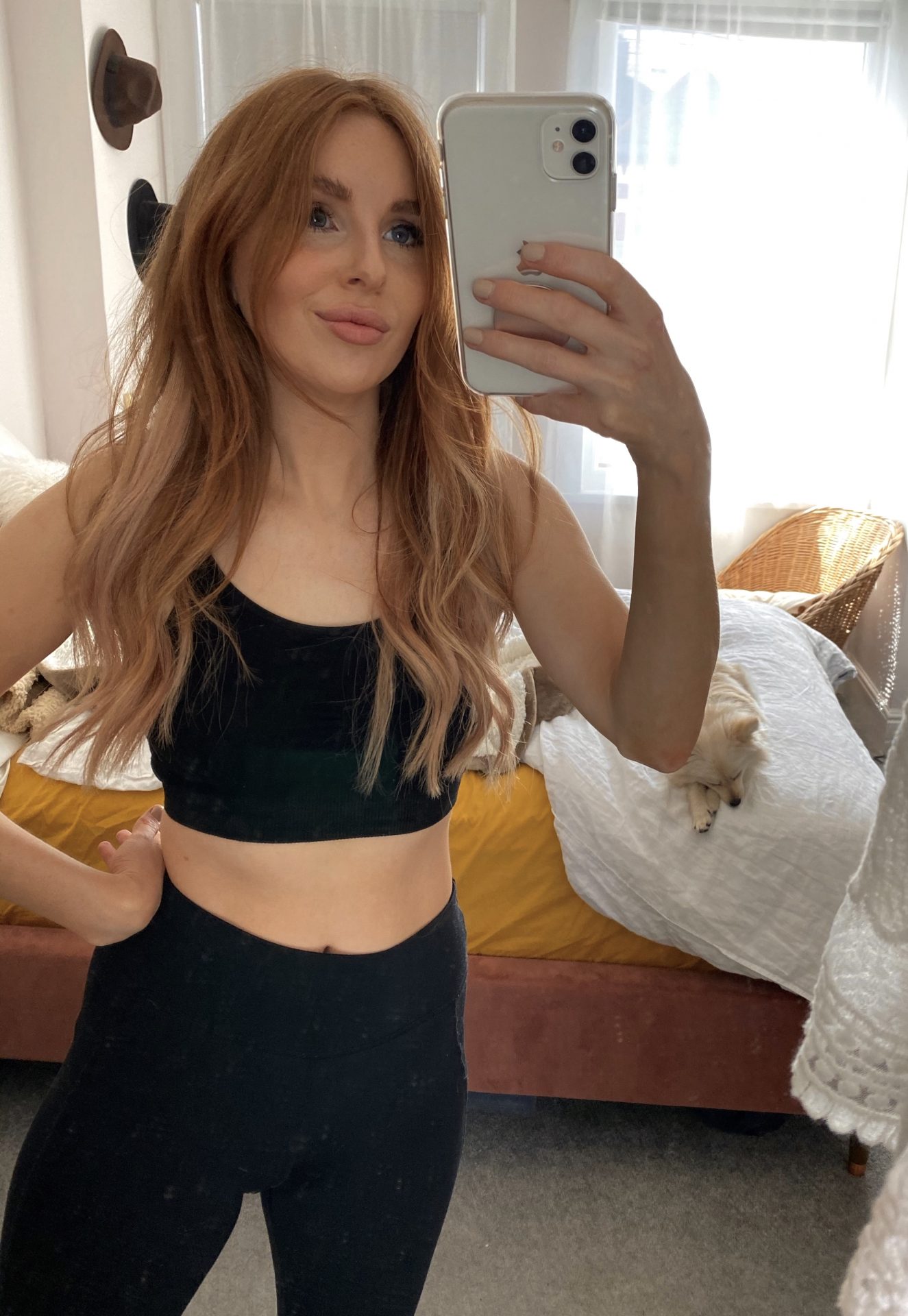Physical education can be an uncomfortable class for many teens, with more than a third of girls saying that they felt insecure and self-conscious during sports sessions, but it’s altogether more complicated and triggering for those who don’t subscribe to hetronormative standards. To avoid being outed or homophobically bullied by her classmates, writer Emilie Lavinia purposely downplayed her physical abilities – something she’s had to address as an adult.
Warning: this article discusses disordered eating.
As a teen, I thought that being strong would inevitably lead to me being outed. It took actually coming out for me to realise that homophobia has nothing to do with the kinds of sports you play and that we’re all having to unlearn what we were taught at school.
Skipping school physical education is a rite of passage for many teens but in my case, it was a survival technique – to avoid being outed as gay by my classmates. Despite being good at sports, I actively tried to fail physical education for fear that being fast and strong would make me appear too masculine.
Paranoia, body dysmorphia and anxiety about safety are all things that LGBTQ+ kids experience at school so when I look back, I’m not surprised that I believed being stronger, faster or looking different might make me a target for homophobia. People are homophobic because they’re homophobic, not because you’re a sporty kid. But 15 years ago, when I was coming to terms with my sexuality, schools were still somewhat responsible for the institutionalised prejudice hammered into us by Section 28 (a law that forbade “the promotion” of homosexuality in schools). Kids were conditioned by the dearth of necessary support.
You may also like
“As a plus-size, non-binary person, exercise is form of self-love“
PE classes can be challenging for queer pupils because of how exposed they tend to make people feel. Around the age of 14, I realised that I wasn’t into boys in the same way that everyone else seemed to be. Lying about who I fancied and having friends who agreed to performatively go out with me were natural survival tactics. Being sporty, however, began to feel like something that might give my sexuality away.
I used to be good at cross country running and spent lunchtimes playing football with the other kids but I soon realised that I’d have to give up both of these hobbies; competitive fitness tends to reiterate binary gender stereotypes. At my school, where girls played netball and boys were footballers, that sense of having to conform has the potential to make things incredibly difficult for anyone struggling with their gender identity or sexuality.
I became obsessed with appearing too “masculine” and subsequently being outed. As a result, I started running slower, killing my pace so as not to win races. I’d allow the other girls to overtake me, step to one side to let them score and attempted to showcase weakness as a signifier of what I believed to be femininity. I left the football team and stopped exercising at home. I started wearing black eyeliner and told my mum that I needed high-heeled school shoes. Eventually, I started skipping PE classes altogether.

An A-grade student, I wasn’t the sort of person who’d miss classes, but the anxiety I felt in the changing rooms before PE was overwhelming. And the girls-only swimming classes? Forget it. I went nowhere near those. It was easier to just be absent from any fitness-related class altogether or at the very least, feign weakness, forge sick notes and hang around on the sidelines.
I was even conscious that my wardrobe could give my sexuality away, and so I swerved sportswear, neutral colours and anything else that might make me seem gay or boyish. Even my train-track braces were bright pink and purple. Everything had to be colourful and femme. Ironically, I’m now aware of just how camp and LGBTQ+ friendly my ultra-femme look of rainbow scrunchies and pink fluffy ski boots actually was and have since lovingly recreated it at Pride.
It was easier to just be absent from any fitness-related class altogether or at the very least, feign weakness, forge sick notes and hang around on the sidelines.
A year or two later, I was finally outed against my will – after coming out privately to a few close friends. Had I known that was going to happen, perhaps I wouldn’t have denied myself something that I really enjoyed – sports. School was tough after that and to stay slim, I began to starve myself instead of exercising. I’d created this warped idea of what obviously gay behaviour and “normal” straight behaviour was. Of course, giving up exercise never actually prevented anyone at school from calling me a “dyke” or spreading homophobic rumours about me.
At university, my bizarre relationship with exercise and my sexuality continued. I stayed in the closet throughout that time, and kept my fitness and food issues firmly hidden too. All of my relationships with women happened in secret and I still saw being strong as a “gay giveaway”.
It wasn’t until I came out of a four-year relationship with a man that, aged 27, I finally decided to properly come out to my friends, family and online followers as sexually fluid. It was at this point that I started to exercise again. I started gently with weekly yoga classes. At the time, I had zero upper body strength and my wrists cracked and hurt when I planked. My cardio fitness was worse than my grandmother’s so I took to running around the park by my house every evening.
For the first few months, I hacked and wheezed up the inclines of Hilly Fields (Lewisham) and hated every moment. But soon, the combination of yoga sessions with an incredibly patient, kind teacher, combined with my focused park runs, left me feeling more powerful than I’d felt in years. I decided to go all-in on the endorphins and started strength training at the gym and having weekly cognitive behavioural therapy sessions too.
Actual sportswear found its way back into my wardrobe and I started eating high-protein meals. Being heavier, fitter, fuller began to help me unpick a decade of shame and anxiety linked to my sexuality.

Today, the link between mental health and exercise is well known – but those of us who went to school during the ‘90s and ‘00s weren’t taught about holistic wellbeing. You were either good at sports, which was considered to be a relatively masculine trait, or you were “girly”. Size zero was beautiful and if you were gay at a school like mine, you were a target of suspicion from pupils, parents and teachers.
I don’t blame my teachers. Most people my age received a paltry sex education, Personal, Social, Health and Economic Education (PSHE) and personal support at school. That’s not surprising when you learn that Section 28 was repealed when I was already 13-years-old and as such, most of my teachers had no training for how to speak to kids about LGBTQ+ issues.
Today, aged 31, I’m impressed and amazed at what my body can do every day. If you see me in head-to-toe activewear with a giant water bottle under my arm, it means that I finally have nothing to hide. When you finally experience that, it’s a great feeling.
If you or someone you know is struggling with disordered eating, visit the eating disorder charity Beat. MindOut is the LGBTQ+ mental health service run by and for the community.
Been out of the sporting space a while? Not sure where to start fitness-wise? Join the Strong Women Training Club – a supportive and inclusive community designed to get you stronger today than you were yesterday.
Source: Read Full Article